Features and varieties of pepperoni, its cultivation and applications
"Pepperoni" in translation from Italian means pepper. This common name belongs to different varieties of hot and sweet peppers.
In this article, we will talk about why pepperoni is considered special, what it is, how it can be used and what to do to grow this vegetable well.
The content of the article
What is this pepper
Pepperoni is the main type of pepper in Greek and Italian cuisine... Its second name is Tuscan pepper. It got this name due to its small size.
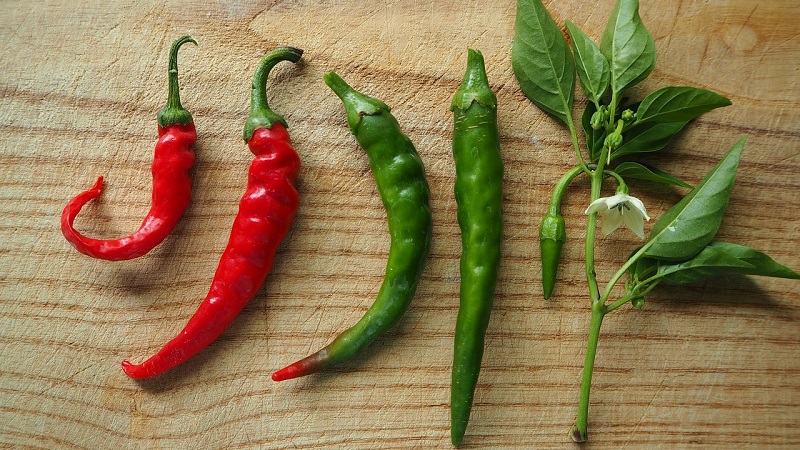
Pepperoni is grown both commercially and for personal use.... Plants bloom modestly, but bear fruit abundantly. Some varieties can bear fruit for five years or more.
What it looks like, how and where it grows
Pepperoni is not much different in appearance from chili.... Pepperoni peppers vary in size and shape. Depending on the variety, the fruit can be curved, conical, straight, elongated or round. The color is green, red, purple, yellow.
There are agricultural and decorative varieties. On an industrial scale and four species are grown in summer cottages:
- The classic sweet pepperoni is an early ripe red variety for making various types of pizza and sandwiches, as well as preparations for the winter.
- Hot red - hot pepper for pickles, salads, soups, sauces.
- Green - slightly burning with small fruits up to 10 cm.
- Yellow is a juicy sweet variety of yellowish-orange color, ripening 90-100 days after growth.
Indoor crops bred by crossing and belong to hybrid vegetable capsicums.
Reference. All types of capsicum originated from wild plants that are still found in the subtropical and tropical regions of the American continent. Each species is divided into separate subspecies, on the basis of which many varieties are derived.
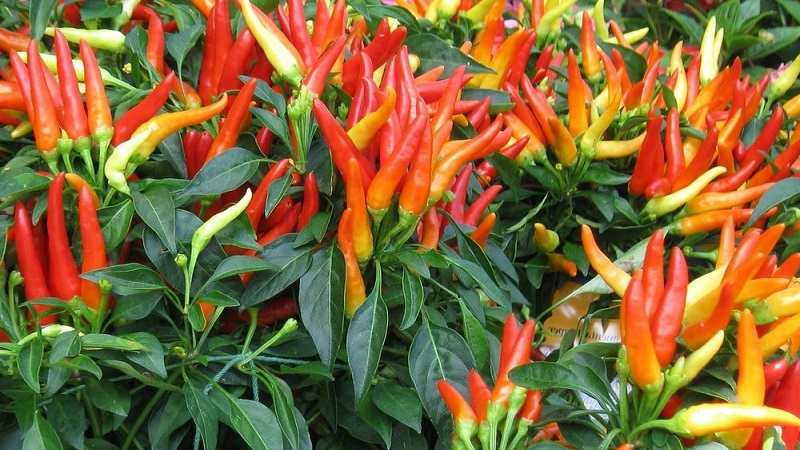
Taste and aroma, pungency
Different varieties of capsicum have a completely different taste.... Distinguish between sweet, pungent and bitter pepperoni. Green pepper has the most pronounced aroma, but its taste is much softer than red.
The pungency and pungency of a vegetable is determined by the amount of capsaicin - a unique substance that is contained in the plant. Different varieties provide both light and strong pungency. Thanks to its spiciness, pickled pepperoni is one of the main ingredients in the preparation of pizza, soups, salads, vegetable and meat dishes.
Features:
Hot peppers have excellent properties... Residents of Mexico, India and Thailand claim that this particular vegetable helps them maintain good health.
Composition, properties, KBZHU
Capsaicin is a plant alkaloid, which is part of pepperoni, determines the taste and aroma of the fruit. In addition to the alkaloid component, pepperoni contains: vitamins C, PP, proteins, sugar, carotene, vegetable and essential oils.
Pepper also contains (per 100 g of product):
- proteins - 1.4 g;
- fats - 0.6 g;
- carbohydrates - 5.9 g;
- calories - 30 kcal.
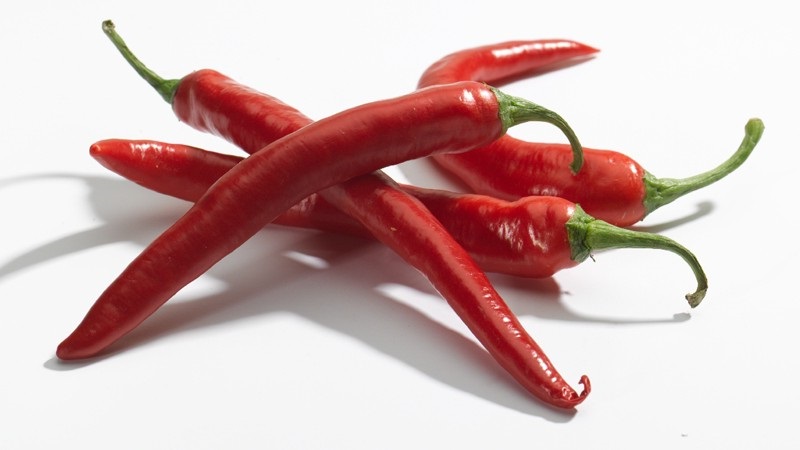
Harm and benefit
The main active ingredient is capsaicin:
- has a pronounced antibacterial and analgesic effect;
- supports the immune system;
- prevent infections;
- improves digestion;
- accelerates metabolic processes and participates in fat burning.
Be careful with spicy pepperoni, because, getting on the mucous membranes of the nose or eyes, capsaicin causes severe burning and discomfort.
Other types of hot peppers:
Why cayenne pepper is good for you and how to grow it
What is good about the "Ogonyok" pepper variety and the secrets of its cultivation
Contraindications
People with cardiovascular disease it is recommended to use pepperoni with caution. Its active ingredients can cause serious harm to health.
With excess use of this spice various diseases of the gastrointestinal tract can be aggravated. Pepper is strictly prohibited to ulcers. It is recommended to limit the use of hot pepper for people with diabetes and kidney disease.
Also this product can be harmful if you have allergies and intolerance of its constituent components.
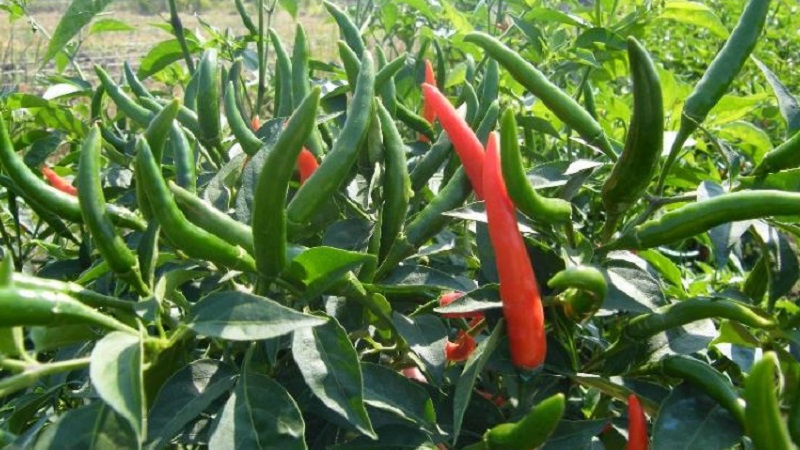
Kinds
Many early maturing varieties have yellow and light green color. The flesh of these varieties is generally sweet and juicy.
Mid-season peppers depending on the variety change color from yellow to orange and from purple to red.
Red sweet varieties in appearance they resemble berries or squash. Due to its high fiber and low fat content, this variety is especially useful in dieters.
Ultra-early ripening undersized varieties at the beginning of ripening, they have cream or purple fruits. At the stage of full ripening, ripe peppers become bright red with a pronounced pungent taste.
Application
As a seasoning, spicy pepperoni gives a piquant taste to marinades, fish, soups... In addition, this seasoning is used in the preparation of side dishes.
Due to its beneficial properties pepperoni is endowed with many therapeutic options:
- The antibacterial effect helps in the fight against ENT diseases.
- Anti-inflammatory effect eliminates intestinal infections.
- Improves the condition of patients suffering from bronchial asthma.
- Reduces pain in pathologies of the musculoskeletal system.
- Reduces blood pressure at the initial stage of hypertension.
- Solves some of the problems associated with skin diseases.
- It is used as an external cosmetic for getting rid of cellulite and hair loss.
Growing
Early, medium and late pepperoni can be grown outdoors and indoors... Most often, seedling cultivation is used.
Care features
Before choosing any variety for planting, decide what degree of hotness you need... This will help you find the right variety for planting.
Important! To grow any kind of pepperoni, you need a place protected from direct sunlight, well-lit, and fertile loose soil.
Before flowering, peppers must be watered once a week with warm water., then during the period of fruit ripening 2-3 times a week. For a more lush tillering, young plants are pinched, and for the development of large fruits, some of the flowers are removed and a plant bush is formed into two trunks.
Top dressing is carried out with a solution horse manure, mullein or mineral fertilizers intended for peppers, eggplants and tomatoes. The procedure is performed once every 10-14 days.
Pepper bushes huddle, loosen and weed regularly... Tall peppers require props.
Transplant bushes after harvest harvest should be done carefully so as not to damage the root system.
Attention! If the pepper is grown in an apartment, it must be supplemented with phytolamps.
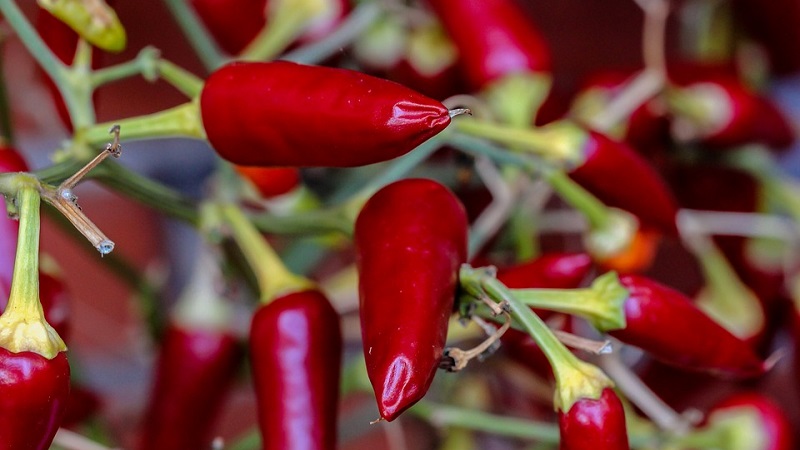
Diseases and pests
In greenhouses, spider mites often appear on seedlings... If you do not pay attention to this, the plant may die. Affected bushes are sprayed with soapy water or preparations "Aktellik", "Akarin", "Fitoverm".
With high humidity aphids can settle on adult plants... To combat this pest, the seedlings are sprayed with a solution of onion peel or potato tops.In case of severe damage, the chemicals "Fitoverm", "Aktara", "Pegas" are used.
In the fight against whitefly use organophosphorus solutions. Affected plants are sprayed several times in one season.
Poor soil and cultivation errors, high humidity can provoke fungal diseases... To avoid this, pay special attention to growing seedlings, adhering to the watering regime and the rules for soil cultivation.
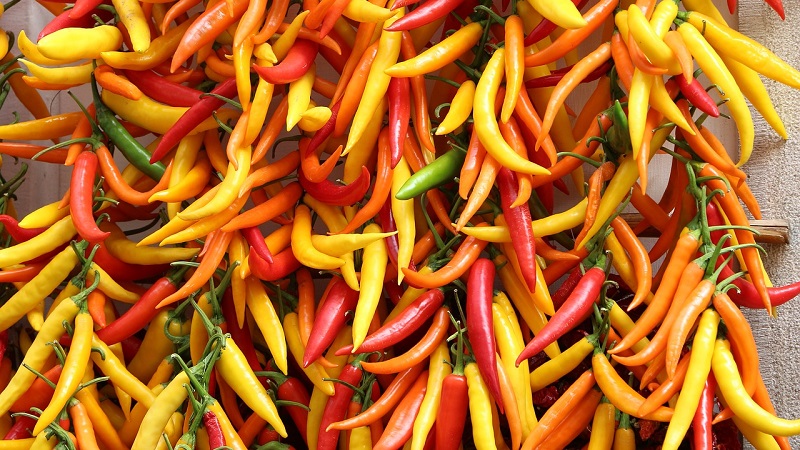
Collection and storage
The harvest is removed at different stages of fruit ripening... Unripe vegetables are canned or laid out in a dark room for ripening. When stored properly, they mature within two months. Fully ripe peppers of normal size are removed every week before the first cold weather.
Before storing vegetables, they are sorted and sorted out, getting rid of damaged and rotten ones. Different containers are used for storage - boxes, paper or plastic bags.
It is interesting:
What you can not plant next to bitter pepper: the secrets of growing
Blanks for the winter
Insofar as pepperoni is a natural antiseptic, it is ideal for canning without sterilization.
Pickled peppers are an excellent preparation for the winter... It is used in the preparation of vegetable, fish and meat dishes. There is a recipe for making hot pickled peppers in almost every national cuisine. For blanks, fruits are needed with a dense skin, without damage. The pickled vegetable is used as an independent snack or as a seasoning for sauces and salads.
Conclusion
Now you know what medicinal properties and delicious taste qualities are in a small, but very useful and valuable vegetable - pepperoni.
With proper planting care, you will have a good harvest that can be used in cooking or used as a medicine. The main thing is to remember about possible contraindications and not to abuse the product.